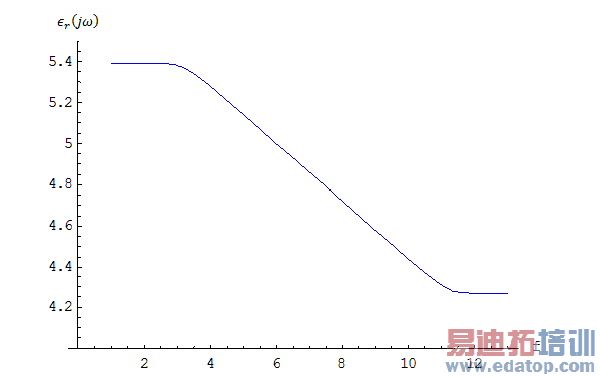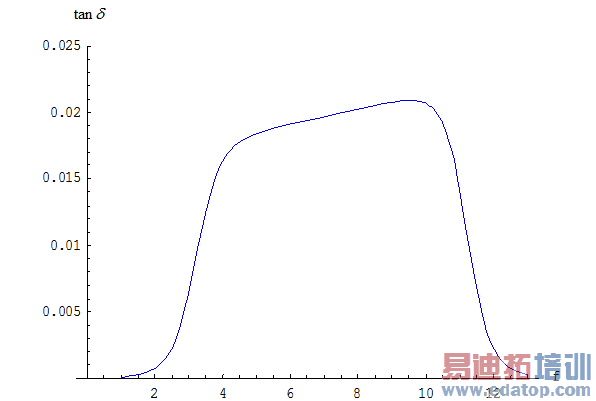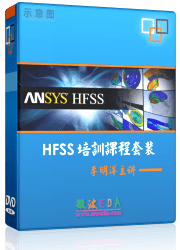- 易迪拓培训,专注于微波、射频、天线设计工程师的培养
HFSS15: Djordjevic-Sarkar Causal Dielectric Model
In the paper "Wideband Frequency-Domain Characterization of FR-4 and Time-Domain Causality" (A. R. Djordjevic, R. D. Biljic, V. D. Likar-Smiljani, and T. K. Sarkar, IEEE Trans. on Electromagnetic Compatibility, Nov. 2001, p. 662), the following simple analytic model was proposed for the frequency dependence of the complex relative permittivity in FR-4 dielectric materials:

where

This model is an analytic function and hence, causal in the time domain. It is very simple and only five parameters define it.
The loss tangent is defined as follows:

The behavior of the real part of permittivity versus frequency using the Djordjevic Sarkar model is given by way of the following plot:

The loss tangent predicted by the model (for the case s = 0) is shown below.

Notice that both curves have two transition frequencies, the first around 103 Hz and the second around 1011 Hz.
The lower transition frequency is evident in the experimental data for FR-4; the upper transition frequency is best thought of as a fitting parameter. Measured data for FR-4 up to 10 GHz does not show the upper transition frequency. Typically, the upper transition frequency is placed at very high frequency, beyond the limits of practical interest.
Another major feature of the model is that the loss tangent is approximately constant between the two transition frequencies. This constant loss tangent behavior is also observed experimentally in FR-4, except at low frequencies, where it decreases. At very low frequency the loss tangent starts to rise again due to nonzero DC conductivity.
HFSS 学习培训课程套装,专家讲解,视频教学,帮助您全面系统地学习掌握HFSS
上一篇:Drawing a Plane
下一篇:Drawing a Box


